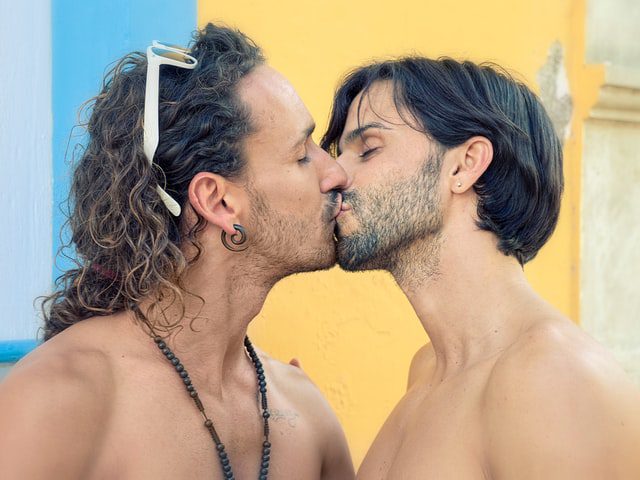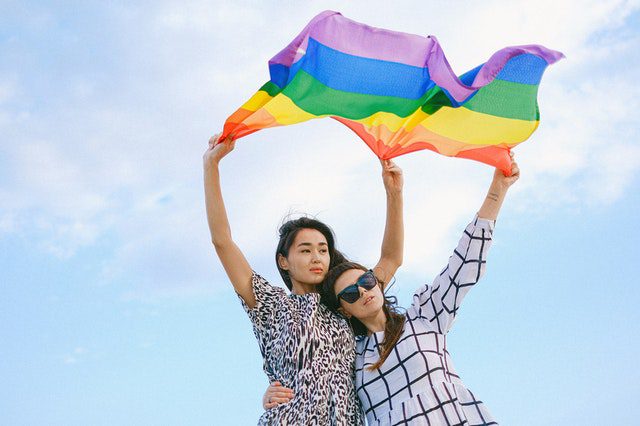
What Is Bi-Erasure
Bisexuality is a sexual orientation described as being emotionally, romantically, and sexually attracted to more than one gender.
Many stereotypes plague the bisexual community and that the LGBTQ community, queer community, and their heterosexual peers don’t validate or recognize the authentication of the existence of bisexual identities. This gives rise to widespread bisexual erasure.
« They’re confused. They’re either gay or lesbian, and this is just a phase until they find out which one. They’re actually straight people looking for attention. Bisexuality is not a valid sexual orientation. »

These phrases are commonly heard from the mouths of straight people and the non-bi queer community. Despite the strides made in raising the awareness of the LGBTQ community, the bisexual community is neglected, questioned, or denied outright. This common attitude has serious consequences regarding the mental health and severity of dysphoria in bisexual individuals.
The majority of the population thinks that the word « bisexual » is defined as being exclusively attracted to men and women. This is false, as it actually refers to being attracted to more than one gender; this includes non-gender binary individuals.
Author and bi advocate Robyn Ochs created a definition for bisexuality that includes the emotional, romantic, and sexual attraction to more than one sex or gender, which includes those falling anywhere on the gender spectrum.
Despite various attempts at educating the general population about bisexual identities, bi-erasure and bi invisibility is a dark cloud induced by ignorant members of the LGBTQ community and straight world.
The bisexual community has actively attempted combatting misconceptions about bi people by creating various umbrella terms such as bi+ and bisexuality+, aiming to include a multitude of sexual identities beyond the gay and lesbian spectrum. The bi+ label includes the queer community, fluid, and pansexual individuals. Furthermore, bi+ also includes people with no gender identity.
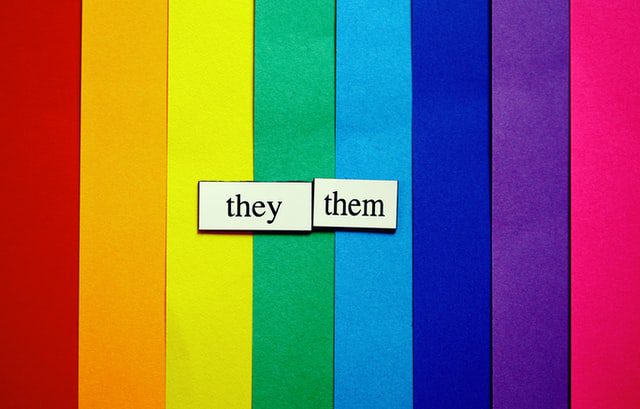
What Is Bi Erasure?
Bisexual erasure occurs when the legitimacy of bisexuality, either individually or in general, is questioned or contradicted. Bisexual erasure can be practised on an interpersonal or societal level.
Bisexual invisibility greatly contributes to the onset and development of mental health issues in bisexual individuals. This serious problem is ridiculously widespread due to common and false assumptions made about what a bisexual person is experiencing. Common misconceptions include stating that bisexual people are going through a phase, thinking that two people of the same gender who are in a romantic relationship are exclusively homosexual, assuming that women engaging in relationships with men must be heterosexual adults, and neglecting the inclusion of the bisexual community in LGBTQ celebrations and pride festivals.
Why Does Bi Erasure Occur?
A professor of psychology at Rosalind Franklin University, Brian A. Feinstein, States that bi-erasure happens due to the general rigidness of the average person’s thought patterns and mentality. Bisexuality is erased because most people cannot consider the gray area between being straight, gay, or lesbian.
Feinstein believes that it is challenging for people to wrap their heads around the idea that sexual orientation isn’t as black and white as they may think. The reluctance to comprehend that everyone doesn’t necessarily fall under the categories of gay men, lesbian women, straight men, and straight women contributes to the persistent presence of bisexual erasure.
Lauren B. Beach, Ph.D., presented another angle to explain the bi-erasure recurrence. Beach describes bi-erasure as stemming from a « Westernized social obsession with gender binary. »
The general conception that women can only be lesbian or straight erases the legitimacy of bisexual women. Similarly, many people believe that men can only be gay or straight, eradicating the authenticity of bisexual men. Dominant cultures view bisexuality as being part of this and part that, where bisexuality is, in fact, a distinct sexual orientation, not a 50-50 mixed sexual identity.
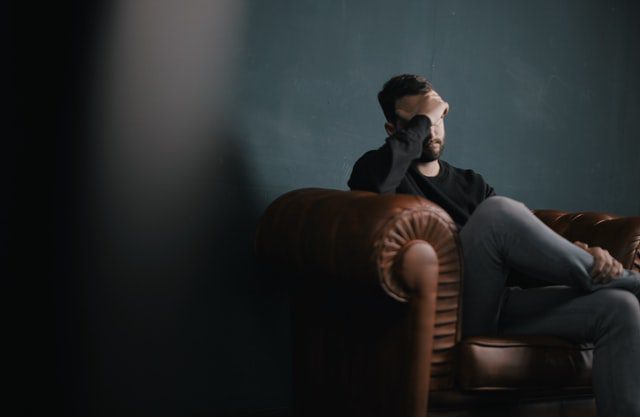
« Just A Phase » Worsens Bi-Erasure
Referring to bisexuality as « just a phase » is extremely harmful to the mental health and gender affirmation of bisexual people. Unfortunately, this claim is often uttered by the LGBT community, transgender people, lesbian communities, gay men, and straight men and women alike. It disproves the existence of bisexuality as a sexual orientation.
Many LGBTQ people consider bisexual people not to be queer enough to belong to the LGBTQ community. This blatant exclusion and bisexual erasure cause people to be subjected to minority stress. Bisexual individuals are overlooked and discredited, being excluded from any queer events and LGBTQ celebrations simply because they identify as bisexual and do not conform to the lesbian or gay community.
When a bisexual person is described as not being queer enough, it leads to diminished mental health and feelings of insecurity and self-doubt. Pan- and bisexual young people are hereby encouraged to cease the exploration of their bisexual identity before it even begins. Bi-erasure results in detrimental social norming within the bisexual community and internal divisions.
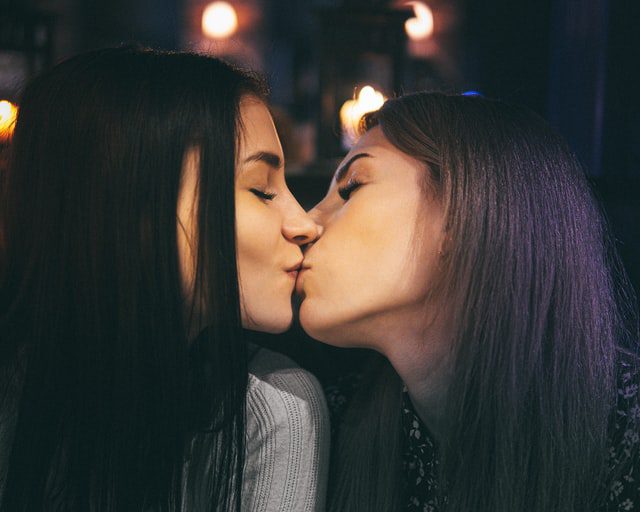
The Health Implications of Bi-Erasure
Bi-erasure is undoubtedly a form of stigma, and stigma is unfailingly detrimental to health, both mentally and physically.
The Journal Of Sex released a study in 2017 indicating that bisexual people are immensely more prone to developing anxiety and depression compared to straight, lesbian, or gay people. Moreover, researchers determined that the prevalence of bi-erasure was the major contributor to the manifestation of these mental health disparities.
If bi-erasure can be eliminated, the extreme feelings of abandonment and isolation that so many bisexual people experience can be reduced, and with it, the onset of health issues like depression. Bisexual people are reluctant to come out and express their sexual identity because they are not receiving the support they deserve.
Some mental health conditions have been associated with structural level social determinants of health such as poverty, making the eradication of bi-erasure all the more urgent. The Human Rights Campaign also reported that bi people face drastically poorer health outcomes, are more likely to suffer from conditions such as asthma and high cholesterol, and are more prone to smoking and drinking alcohol. Bisexual women have higher obesity and heart disease occurrences than straight women.
The complications associated with bisexuality become even more intricate when gender identity comes into play: transgender people and people of color who identify as bisexual face bi-erasure alongside transphobia and racism.
Many physical health disparities stem from a lack of obtaining preventative medicine. The American Cancer Society claims that bisexual women receive routine care such as cervical cancer, breast cancer, and colorectal screening tests much less frequently than non-bisexual women.
Bi-erasure is largely to blame for the overall reluctance of bisexual people to frequent health care facilities and plays a critical role in decreasing the community’s visibility regarding bisexuality.
The lack of access to adequate health care could be attributed to the fact that health care providers don’t offer the opportunity to disclose one’s sexual orientation, and bisexual individuals don’t feel comfortable bringing it up. Statistics indicated that 39% of all bisexual men and women do not disclose their sexual orientation to any health care providers.
Feinstein claims that the lack of transparency regarding sexual orientation could cause inaccurate medical treatment in bisexual people because health care providers don’t consider the possibility that the patient may be bisexual and have relationships with people of other genders.

5 Myths About Bisexuality
(1) Bi People Are Transphobic
This myth seems completely irrational but is surprisingly common. Even if a bisexual person turns out to be transphobic, their sexual orientation is certainly not the motivation. The original definition of bisexuality in history suggested that this sexual identity is gender binary and does not include trans or non-binary identities, but ever since the widespread expansion of gender identities, this is no longer the case. The terms bisexual and bi+ are now used to refer to anyone who is attracted to more than one gender. Over a quarter of trans folks identify as bisexual, and 23% describe themselves as queer.
(2) Bisexual People Face Less Severe Stigma Than Gay Or Lesbian People
Bi+ people have proven to face minority stress and an elevated risk of attempted suicide compared to lesbian, gay, or heterosexual adults. Bisexual erasure plays a significant role in raising the risk of developing mental health issues and overall well-being. An astonishing 37% of bisexual adults reported suffering from depression, compared to the much bleaker 17% of heterosexual adults experiencing the same thing. Bi invisibility demotivates bisexual people to seek the help and support they desperately need when they suffer from mental health disparities.

(3) Bisexual People Become Straight When They Are In A Heterosexual Relationship
One of the most crucial facts to note is that a relationship status does not alter a bisexual person’s sexuality in any way. Bisexuality is its own identity, completely independent from any other sexuality, such as gay or straight. It is not a combination of the two either.
Bisexual people are likely to end up in a relationship with a person of a different gender because the dating pool is greatly shrunk due to biphobia. Many LG people refuse to enter into a relationship with a bi person because of unjustified prejudice, and this contributes to the limited options of partners for bisexual people.
(4) Bisexual People Are Polyamorous
The existence of this myth is partly due to common fetishes surrounding bisexual and queer identities. This is especially true for straight males who firmly believe that bisexuality will result in threesomes. Polyamory is entirely different from bisexuality. Being bisexual means that a person can be attracted to more than one biological sex or gender, while polyamory refers to being able to maintain romantic relationships with more than one person simultaneously. As these terms are completely unrelated. to one another, anyone of any identity can decide to be non-monogamous irrespective of their sexuality. Bi people are by no means more prone to polyamory than anyone else.

(5) Bi Men Are Actually Just Gay
This statement is entirely unjustified, and the number of men who have come out as bisexual should be evidence of that. There are over 3 million bisexual men in the U.S. alone. General biphobia and toxic masculinity results in serious consequences as bisexual men are reluctant to seek health care. A study in the American Journal of Preventative Medicine indicates that bisexual men are inordinately more affected by HIV and more likely to contract other STIs simply because bi-erasure causes them to be disinclined to receive medical care. Bisexual men deserve the same respect and understanding as anyone else, and questioning the authenticity of their sexuality is an unfair insult.
